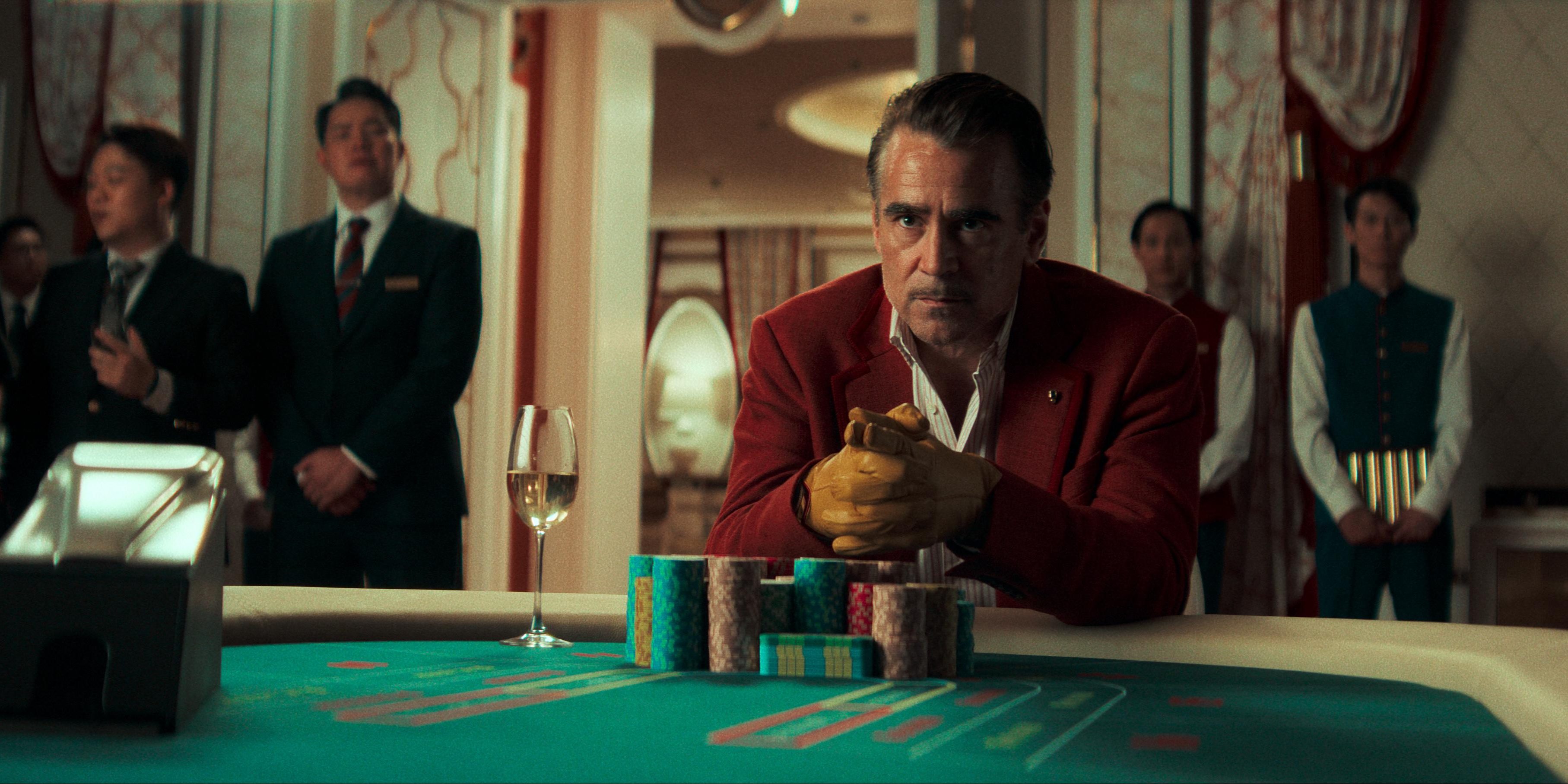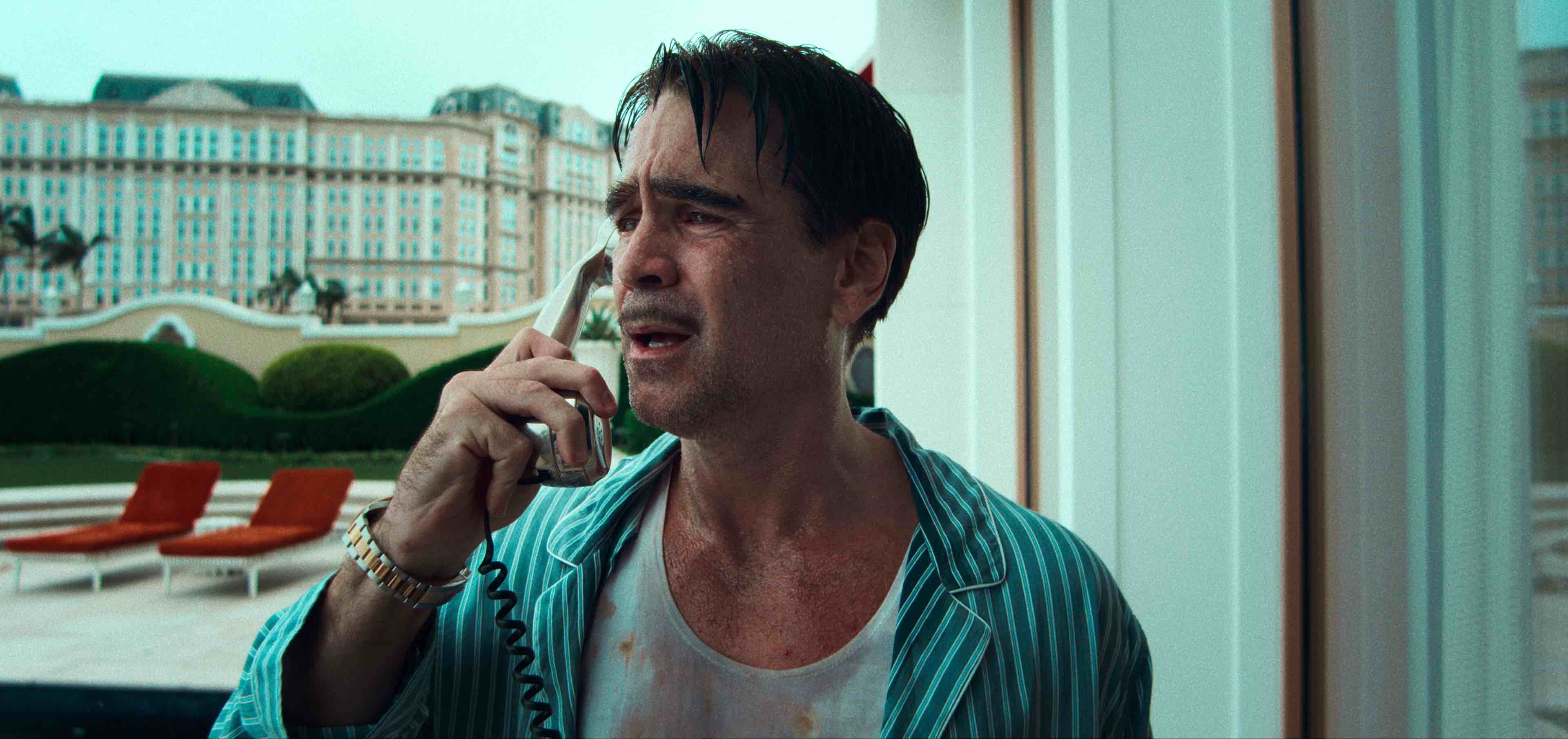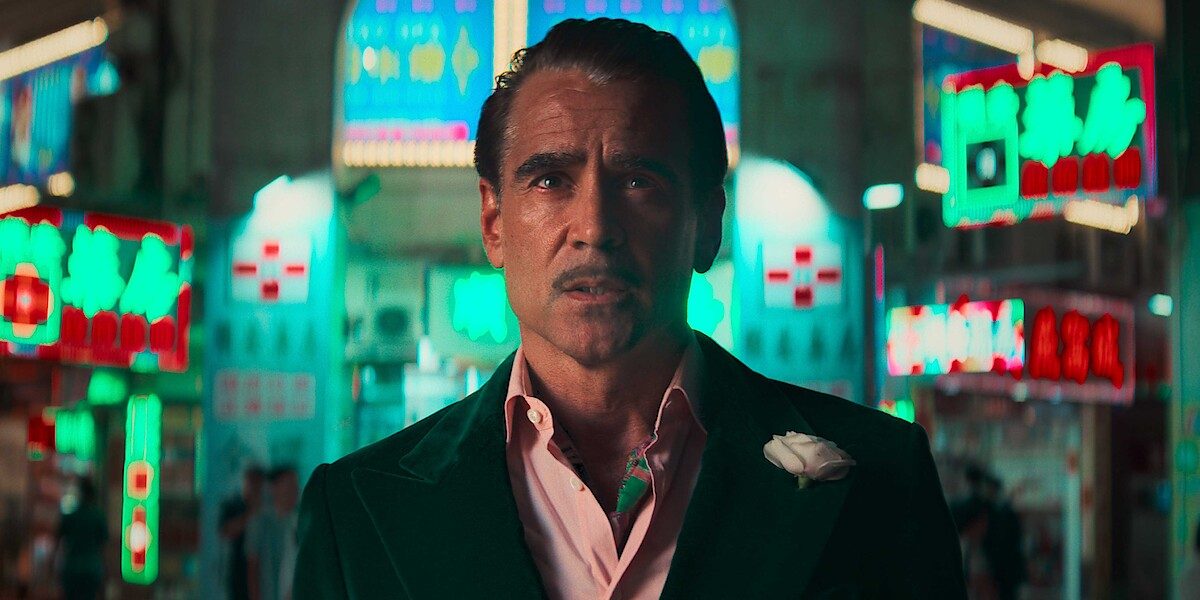Directed by Edward Berger, Netflix’s ‘Ballad of a Small Player’ is driven by the compelling performance of Colin Farrell as Lord Doyle, a man running from a shady past and living an even more dubious present as he gambles his life away in Macau. His crimes start to catch up with him, leading him on a journey that tests him physically, psychologically, and spiritually. The psychological thriller film explores the theme of addiction, wrapped in the protagonist’s intense desire to find redemption, despite struggling to keep his sanity intact. It gets intensely raw and honest in the way it presents the challenges of a person who cannot be sated and lands in trouble because of his desires that know no bounds.
The Fictional Ballad of a Small Player Explores the Reality of Addiction
‘Ballad of a Small Player’ is a fictional story based on the 2014 book of the same name by Lawrence Osborne. The idea for the story came to the author while he was staying at a monastery in Sichuan province during a road trip in China. He revealed that the monks told him about how girls from the remote areas of the country, especially the Tibetan region, would move to Macau and Hong Kong. They never returned home, and no one heard from them ever again, making it feel like they’d disappeared off the face of the earth. This information took hold of him and led him to create the enigmatic character of Dao Ming.

Initially, Osborne approached it as the story of a migrant girl who goes missing, but then the story took a different turn, and Lord Doyle became the central character. Doyle’s story, particularly his gambling addiction, took over the narrative as Osborne looked towards Macau as the primary setting. He first visited the city while living in Hong Kong and had to renew his visa. The process took a few days, so he spent time in the city, and the exploration led him to discover the local casino culture. Though not a gambler, he decided to try his hand at it. He was captivated by the vibe of the place, which he said held a supernatural tinge that he felt was unique to the country’s casino culture, especially when compared to Las Vegas, Nevada.
As the author spent some time gambling, he gained the experience which he poured into the book through Lord Doyle. Many of the casinos and hotels that Osborne visited during this process are featured in the book, adding a layer of authenticity to it. At the same time, the author also leaned upon his experience of meeting gamblers during his trips to Las Vegas, back when he used to live in California. Through them, he understood the aspects of gambling addiction, what draws people to it, and what makes them stay even as they start to lose themselves in it. This familiarity allowed him to add the necessary depth to the story without it becoming weighed down by excessive research.
Osborne revealed that the only research he conducted for the book was to visit the casinos himself, observe the people, and absorb everything unfolding before him. At the end of the day, the story was more about Lord Doyle and his loneliness than gambling, which serves as a metaphor for his self-destruction. The melancholy nature of the Macau casinos was another reason why he decided to set the story there. That, combined with the supernatural aspect of the tale, made the character’s loneliness ring true, turning him into a figure that the audience could sympathize with, if not root for.
Colin Farrell’s Performance Adds a Realistic Touch to Lord Doyle
Edward Berger came upon Lawrence Osborne’s book about eight years ago when producer Mike Goodridge suggested it to him. He was captivated by the story, particularly the character of Lord Doyle, and knew then that it would make a great film. He was also fascinated by the idea of filming in Macau, exploring the story of a “man who’s spiritually empty in a spiritually empty world,” trying to fill a void through various vices. He knew that to make the film work, he needed an actor who could bring out the humanity of Lord Doyle, despite all his flaws, and make him likable enough for the audience to root for him. When he met Colin Farrell, he realized that he’d found the perfect Lord Doyle. He was also intrigued by the idea of having “an Irishman pretend to be a British aristocrat.”

Berger’s casting choice proved to be right as Farrell brought forth the “deep humanity” of the character through “the vulnerability in his eyes and his willingness to go to the edge.” The actor empathized with the character, having struggled with alcohol and narcotics addiction in the late 2000s. While Lord Doyle’s gambling addiction isn’t something Farrell ever indulged in real life, he could see how it would have an unshakable hold on the character. He described Doyle’s condition as “a schizophrenic aspect to being an addict.” He also contributed to developing other aspects of the character, such as leaning into Doyle’s general addiction to various things, particularly food. With this, the actor and the director grounded the character in reality, allowing the audience to see some of their own vices and flaws reflected in him, making him not only believable but also relatable.
Read More: Where Was Ballad of a Small Player Filmed?


You must be logged in to post a comment.